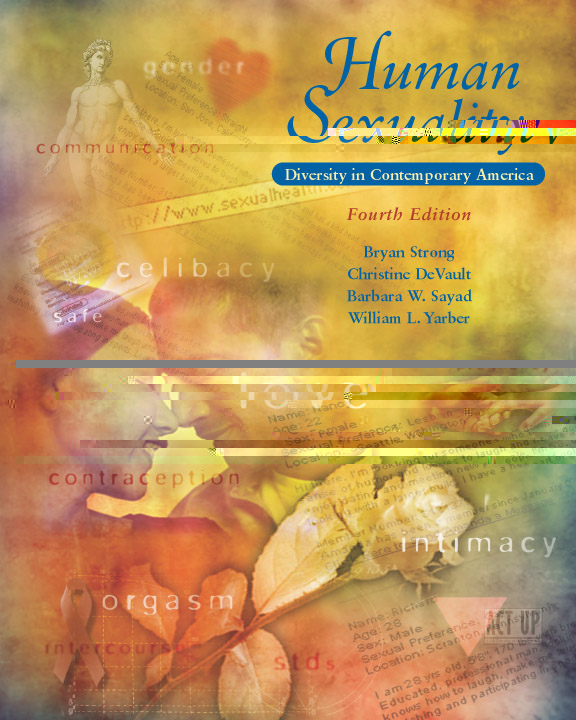 |  Human Sexuality: Diversity in Contemporary America, 4/e Brian Strong,
University of California, Santa Cruz
Barbara Werner Sayad,
California State University, Monterey Bay
Christine DeVault,
Cabrillo College
William Yarber,
Indiana University
Sexual Enhancement and Therapy
Learning ObjectivesAt the conclusion of Chapter 14, you should be able to:
1Discuss the basis of sexual enhancement programs and the role of self awareness, including conditions for "good" sex and "homework" exercises. |
 |  |  | 2Describe ways of intensifying erotic pleasure, including the role of arousal and replacing coitus with erotic activities. |
 |  |  | 3Describe what is meant by sexual disorder or dysfunction including the 4 subtypes associated with them. |
 |  |  | 4List the factors that affect the prevalence of sexual dysfunctions for males and females. |
 |  |  | 5Describe disorders of sexual desire, including hypoactive sexual desire, sexual aversion, female sexual arousal disorder, and male erectile disorder. |
 |  |  | 6Describe orgasmic disorders, including female orgasmic disorder and the male orgasmic disorders of inhibited ejaculation, delayed ejaculation, and premature ejaculation. |
 |  |  | 7Describe the sexual pain disorders of dyspareunia, anodyspareunia, and vaginismus. |
 |  |  | 8Discuss the physical causes of sexual dysfunction for men and women. |
 |  |  | 9Discuss with examples the psychological causes of sexual dysfunction, including immediate causes, conflicts within the self, and relationship causes. |
 |  |  | 10Describe the different psychologically based treatments for sexual dysfunctions and disorders, including the cognitive-behavioral, psychosexual, PLISSIT, self-help, and group therapy approaches. |
 |  |  | 11Discuss medical approaches to sexual dysfunctions, including the use of lubricants, hormones, surgery, drugs, and devices. |
 |  |  | 12Identify considerations in choosing a sex therapist, including unique issues for gay men, lesbians, bisexuals, and transgendered people. |
|



 2002 McGraw-Hill Higher Education
2002 McGraw-Hill Higher Education